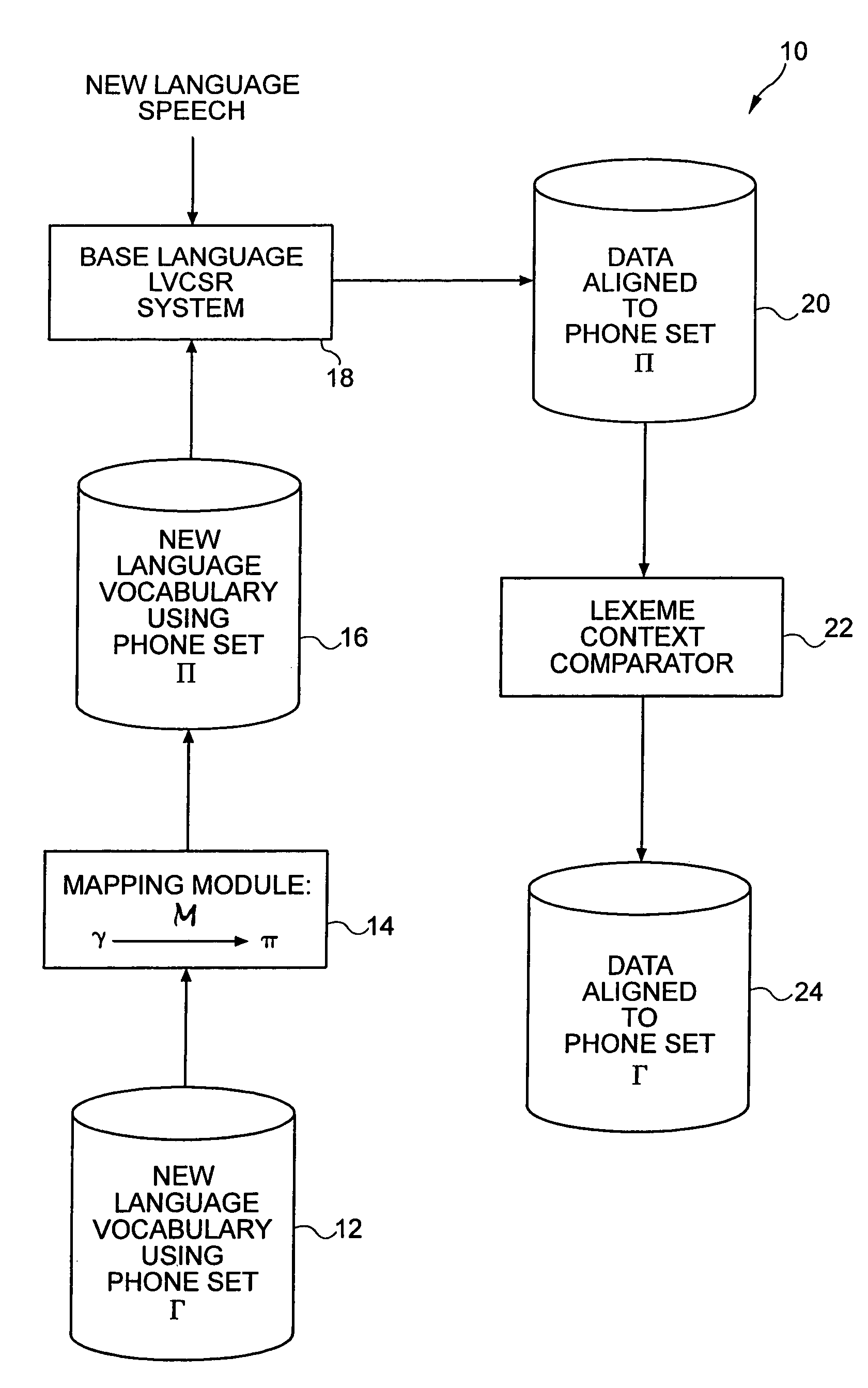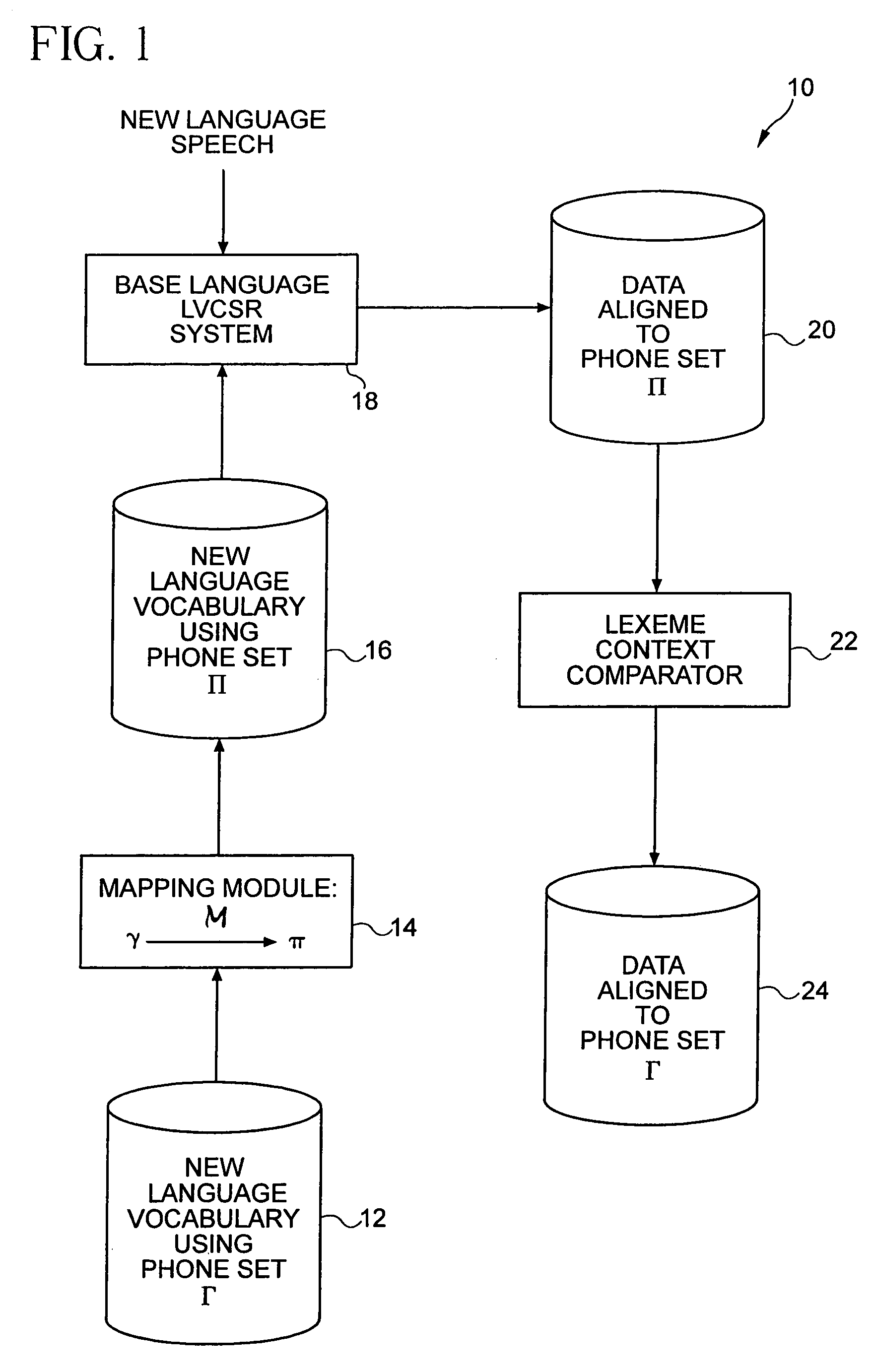Language context dependent data labeling
a data labeling and context technology, applied in the field of speech recognition systems, can solve the problems of not being able to form sounds in all contexts, alignment is not proper, and the most difficult case is obvious
- Summary
- Abstract
- Description
- Claims
- Application Information
AI Technical Summary
Benefits of technology
Problems solved by technology
Method used
Image
Examples
Embodiment Construction
[0020]It is to be appreciated that the following terminology will be employed in describing illustrative embodiments of the invention below. A “base language” is the spoken language in which a trained speech recognition system already exists. By the term “trained,” it is understood that the acoustic models used by the speech recognition system have been created in accordance with input training data from the base language. A “new language” is the spoken language in which a speech recognition system is to be built. The symbol “Γ” refers to a new language phone set. The symbol “Π” refers to a base language phone set. The symbol “” refers to a mapping applied in accordance with the present invention which maps the new language phone set to the base language phone set. Conversely, conventional bootstrapping techniques attempted to map the base language phone set to the new language phone set.
[0021]Generally, as will be illustrated in detail below, the invention provides a technique to p...
PUM
 Login to View More
Login to View More Abstract
Description
Claims
Application Information
 Login to View More
Login to View More - R&D
- Intellectual Property
- Life Sciences
- Materials
- Tech Scout
- Unparalleled Data Quality
- Higher Quality Content
- 60% Fewer Hallucinations
Browse by: Latest US Patents, China's latest patents, Technical Efficacy Thesaurus, Application Domain, Technology Topic, Popular Technical Reports.
© 2025 PatSnap. All rights reserved.Legal|Privacy policy|Modern Slavery Act Transparency Statement|Sitemap|About US| Contact US: help@patsnap.com



